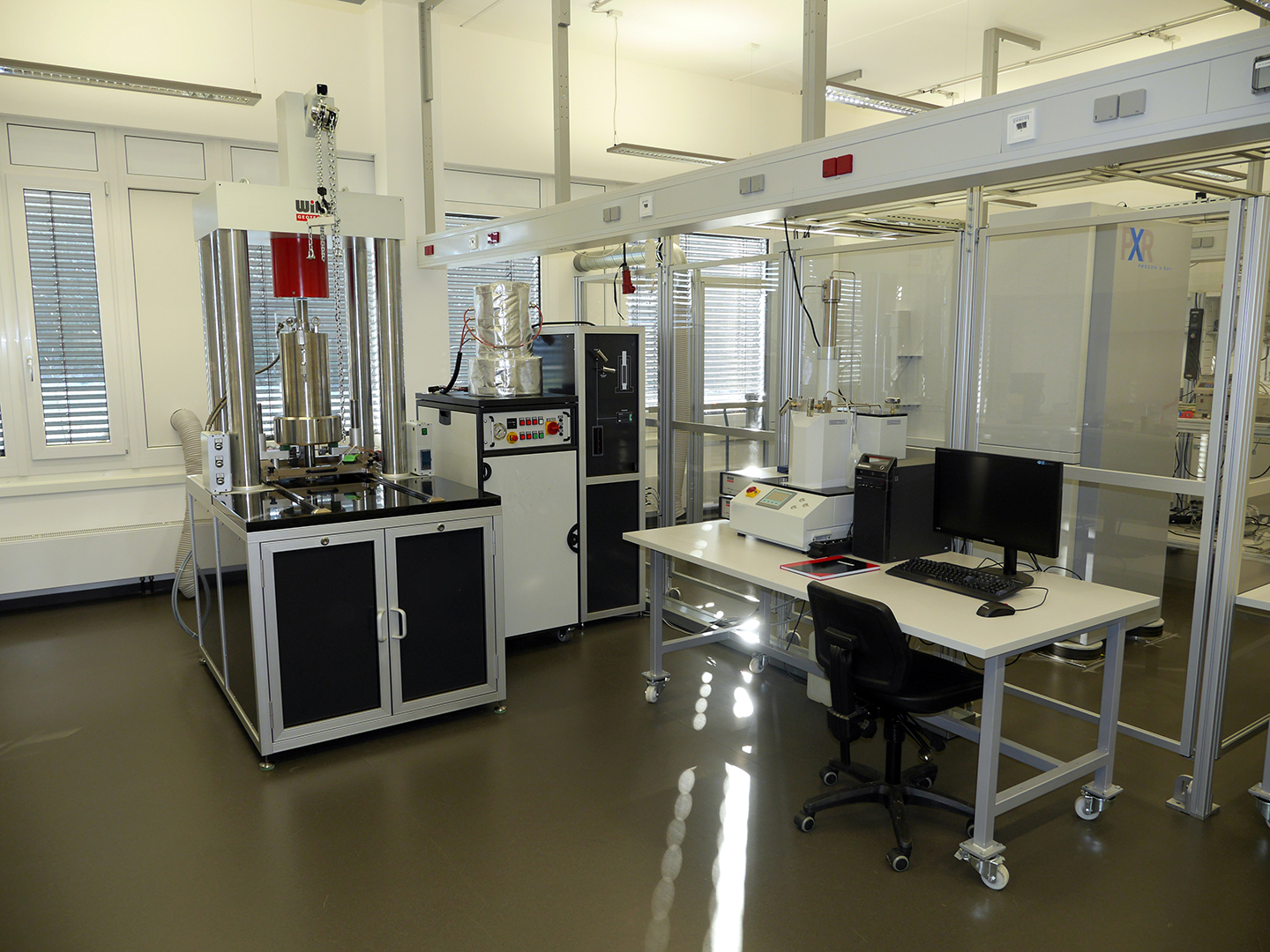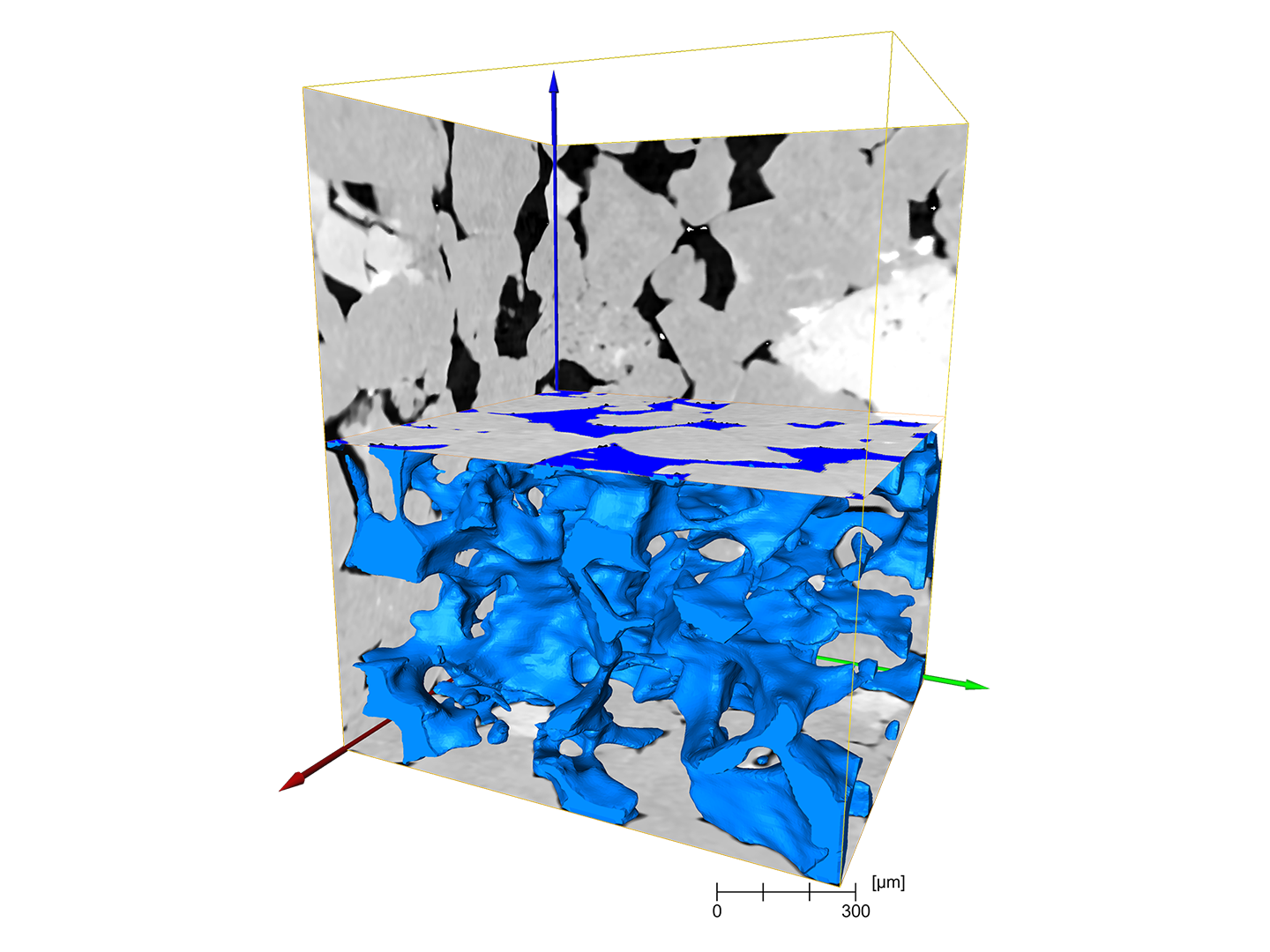Our geoscientific laboratories are one of the central laboratory facilities at the Bochum site, where we use equipment for experiments and analyses on different time and length scales or develop them ourselves and put them into use. The focus here is on investigations in the micrometre-decimetre range.
Petrology
State-of-the-art optical and digital microscopes enable reflected light and polarisation microscopy for the examination of rocks, building materials or various materials. In addition to determining mineralogy, morphology and alteration, semi-quantitative particle analyses can also be carried out. A quantification of the roughness of rock or material surfaces enables an evaluation of the durability or alteration of the examined surfaces with regard to, e.g., corrosion phenomena or wear.
Rock physics
The Rock Physics Laboratory has research facilities with state-of-the-art and in some cases unique experimental equipment. Our range of tasks covers the determination of petrophysical rock and material properties, including proper sample collection, preparation and storage. In addition to the determination of (geo)physical properties such as density, porosity, permeability, thermal conductivity and seismic wave velocities, we are particularly specialised in investigations related to the physico-chemical interaction between rocks and fluids, as well as 4D rock deformation. The thermo-triaxial deformation apparatus at Fraunhofer IEG is able to determine elastic, hydraulic and thermal rock properties under simulated pressures and temperatures. This allows depths of more than 5 km to be simulated. An X-ray computer tomograph enables, among other things, high-resolution 3D tomography (axial or helical) of all kinds of samples. The sample size ranges from a few millimetres to centimetres. The open multifocal X-ray tube generates high beam powers with an accelerating voltage of up to 225 kV, resulting in a maximum total beam power of 50 watts. The minimum focus spot of 1 μm allows for an optimal resolution of about 3 μm. The instrument is capable of helical scanning of samples up to 150 mm in diameter and 600 mm in maximum length, with a maximum sample weight limited to 50 kg.
Geochemistry
The geochemistry laboratories enable the determination of fluid compositions and water analyses from surface waters and wellbore fluids using ion chromatography (IC) and optical emission spectrometry (ICP-OES). In combination with HP/HT flow cells, experiments on rock-fluid interactions with saline fluids and gases can be performed under in-situ reservoir conditions. In addition to qualitative and quantitative analysis using IC and ICP-OES, we also apply analytical methods from wet chemistry and photospectrometry for further evaluation. In addition, we can examine the composition of solids using microwave digestion.

